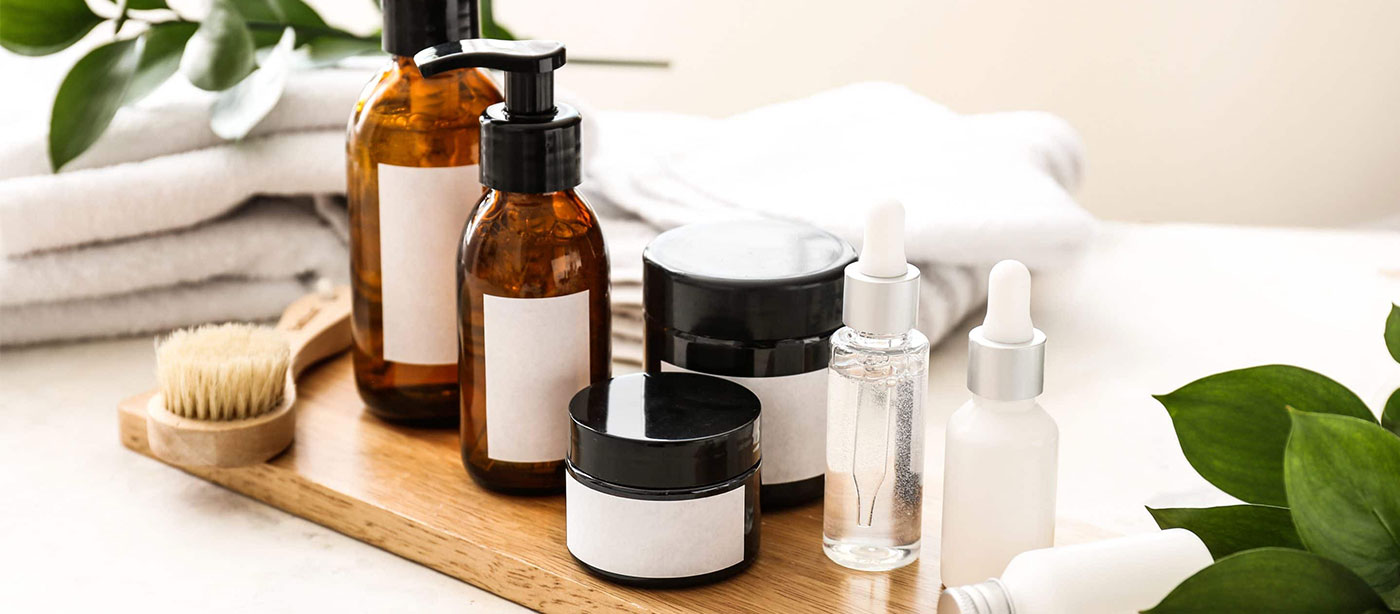Choosing the right packaging for a cosmetic, skin care or personal care product is essential. It must not only effectively protect the content of the product, but it must also be durable, safe, functional and attractive to potential customers; the packaging is crucial in the decision making process, but also in everyday life through its attractive shape, colors and details.
Discover our previous article on the successful development of your product packaging. In this article, we help you navigate the many options and types of packaging and materials, depending on each of the cosmetic products that you aspire to create.
Several packaging options to cater each need
The packaging must be selected according to the direction of use, viscosity, quantity and nature of your cosmetic product. Of course, practicality is at the top of the selection criteria.
1- Pumps
Prefer pumps for your liquid soaps, shower gels and lotions. A pump optimizes the use of lightweight products such as gels, and also helps prevent contamination of the contents by excluding direct contact.
2- Sprays
Spray packaging is recommended for your liquid products. The pressure inside the container allows better distribution of the product. That said, avoid using this type of packaging for heavy oils.
3- Jars and tubes
Choose jars for all your creams, masks, scrubs, or clays. Practical, classic, and effective, they optimize the handling of the product. When it comes to large quantities, tubes are the most hygienic solution.
4- Pipettes and eye-droppers
For your vegetable and essential oils, prefer pipettes. They are luxurious and refined. This solution works perfectly for serums too. With much less risk of oxidation, this type of packaging ensures a long life for your products and reduces the risk of contamination.
Several types of materials in packaging
1- Glass
Glass bottles are the standard for essential oils and vegetable oils. Tinted glass (amber or bleuish) is recommended so that the contents are protected from light and do not suffer any deterioration. Being easy to clean, even at high temperatures, glass containers are easily reused, giving an elegant, even luxurious touch to the product.
Glass is also easily recyclable. But on the downside, it is obviously a heavy and fragile material (breakage) so its eco-balance (transport and logistics) is more important than with plastic or metal. It is also quite energy intensive since the melting required for its manufacture involves reaching around 1500 ° C, at a rate of more than 1160 kWh / tonne of glass produced. It requires 5 times more means of transport than the same PET container, because of its weight.
2- Plastic
It is light, flexible and unbreakable, not to mention its low cost. From an aesthetic point of view, plastics are also extremely flexible and can therefore adopt very varied shapes and colors. The plastics industry is also renewing itself to offer more and more recycled plastic containers.
It’s also important to understand that not all plastics are created equal. As such, we recommend these two types: PET (polyethylene terephthalate – number 1), and PP (polypropylene – number 5); the latter being preferred because of its higher recycling rate. Note also the recent appearance of PET bio-plastics, made from sugar cane. Their use is still rare, but they should interest many manufacturers in the future … A PET container shipped 1000 km saves 19g of CO2 (carbon dioxide equivalent) compared to the same glass container.
3-Aluminum
Metallic cosmetic containers are most often made of aluminum, as evidenced by our hairsprays, deodorants, shaving foam or toothpastes. A barrier material, aluminum offers excellent protection against germs, UV rays, humidity and temperature variations. Aluminum bottles are thus particularly suitable for fragile contents, being able to dissipate heat.
Unbreakable and endlessly recyclable, metal packaging is a great choice for businesses looking to be environmentally friendly. Much lighter and more malleable than glass, aluminum can be molded into a wide variety of shapes and sizes. It offers manufacturers many exclusive design possibilities and its silvery sheen gives it a certain elegance. However, it is believed to be neurotoxic and present in some deodorants and toothpastes. But cosmetic aluminum containers are not affected since an interior food varnish always separates the container from the content, thus avoiding any risk of migration.
There is no one right answer, nor one obvious choice. In fact, ironically, plastic is sometimes the only option that allows local and ecological sourcing depending on the location of the artisan. For others, glass is more consistent with their production circuit. Or it’s aluminum, but all face their own dilemmas.
The only way to get around the dilemma of choosing the best natural cosmetic container, therefore, is to favor “zero waste” alternatives. Prodigia encourages this state of mind, for example with solid cosmetics (cold soaps, solid shampoos, solid deodorants, body balms, etc.) and washable accessories because the best waste is the one that we do not produce . The choice is yours obviously according to your own values and possibilities.
Faced with the embarrassment of choice for your cosmetic packaging, Prodigia is here to help. Allow us to offer you our consulting expertise, and many more services such as bulk sales, legal support, international shipment, and even white label.



